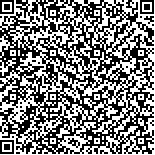| 摘要: |
| 根据2010年10月—2011年1月在吉尔伯特群岛海域利用金枪鱼延绳钓调查所取得的32个站点的大眼金枪鱼渔获数据, 以及测得的温度、盐度、叶绿素、溶解氧浓度、水平海流及垂直海流数据, 采用分位数回归的方法研究了各水层(80—240m, 每40m为一层)中各环境因子与大眼金枪鱼渔获率的关系, 建立“栖息环境综合指数(integrated habitat index, IHI)模型”, 并利用另外8个站点的数据验证研究结果。结果表明, (1) IHI模型的预测能力较好; (2) 不同的水层影响大眼金枪鱼分布的环境因子不同, 在较浅的水层(80—200m), 大眼金枪鱼的渔获率与溶解氧浓度和海流相关, 而在较深水层(>200m)则仅与温度相关; (3) 大眼金枪鱼较适宜的栖息水层为120—160m; (4) 大眼金枪鱼IHI指数分布较高的两个海域分别为2—3°S, 169—175°E与1—3°S, 178—180°E, 建议在上述两个海域作业时, 尽可能使钓具沉降到120—160m的水层, 以达到减少兼捕渔获物, 同时提高生产效率。 |
| 关键词: 大眼金枪鱼, 栖息环境综合指数, 分位数回归, 吉尔伯特群岛 |
| DOI:10.11693/hyhz201205012012 |
| 分类号: |
| 基金项目:国家高技术研究发展计划(863)资助, 2012AA092302 号; 上海市教育委员会科研创新项目, 12ZZ168 号; 高等学校博士学科点专项科研基金联合资助, 20113104110004 号; 2009年度农业部远洋渔业探捕项目资助, D8006090066 号 |
附件 |
|
| AN INTEGRATED HABITAT INDEX OF BIGEYE TUNA THUNNUS OBESUS IN WATERS NEAR GILBERT ISLANDS |
|
SONG Li-Ming1,2,3, YANG Jia-Liang3, WU Ya-Ping3, HUI Ming-Ming3, Lü Kai-Kai3
|
|
1.National Engineering Research Centre for Oceanic Fisheries;2.Key Laboratory of Sustainable Exploitation of Oceanic Fisheries Resources, Ministry of Education;3.College of Marine Sciences, Shanghai Ocean University
|
| Abstract: |
| On the basis of the survey data at 32 sampling stations in waters near Gilbert Islands from Oct., 2010 through Jan., 2011, the vertical profile data of temperature, salinity, chlorophyll-a, dissolved oxygen concentration, horizontal current, vertical current and the catch per unit effort (CPUE) data of bigeye tuna were applied to develop the “Integrated Habitat Index (IHI)” models by the quantile regression method. Models were developed for six water strata from 40m to 280m (40m per stratum) and the entire water column to understand the relationship between the bigeye tuna CPUE and the environmental variables. The measured environmental variables at the other eight sampling stations were used to validate the models’ predictive power. The results showed: (1) the models’ predictive power was good; (2) the key environmental parameters in the IHI models differed among the depth strata. In the shallow water (80—200m), there was closely relationship among the CPUE of the bigeye tuna and the dissolved oxygen and the sea current; In the deep water (>200m), there was closely relationship between the CPUE of bigeye tuna and the temperature; (3) the optimal depth that bigeye tuna inhabit was in the range of 120—160m; (4) the bigeye tuna’s IHIs in the areas of 2—3°S, 169—175°E and 1—3°S, 178—180°E were relatively high. Our study suggested that to deploy the fishing gears in the water depth of 120—160m should improve fishing efficiency and reduce the bycatch. |
| Key words: Bigeye tuna Thunnus obesus, Integrated habitat index, Quantile regression, Gilbert Islands |
